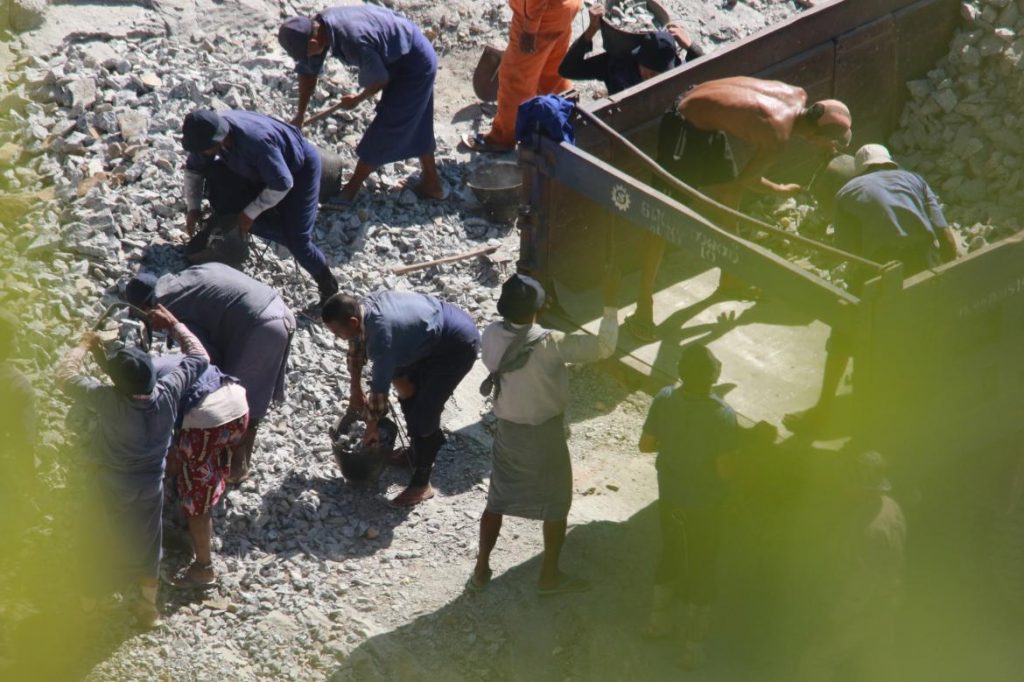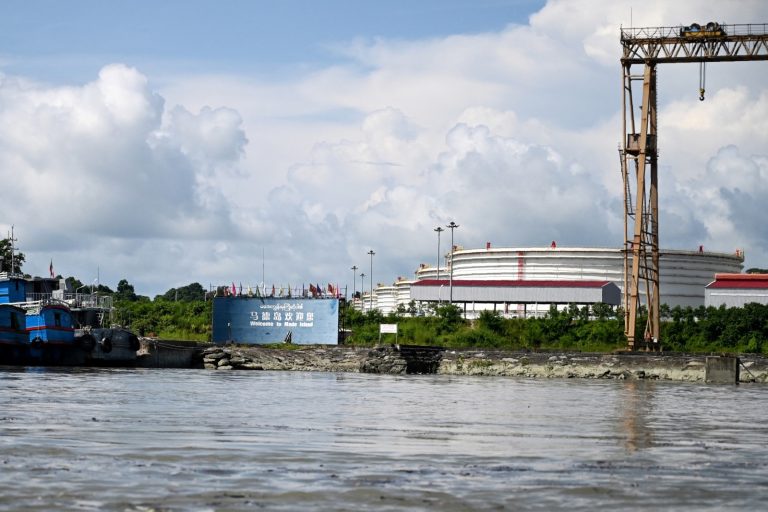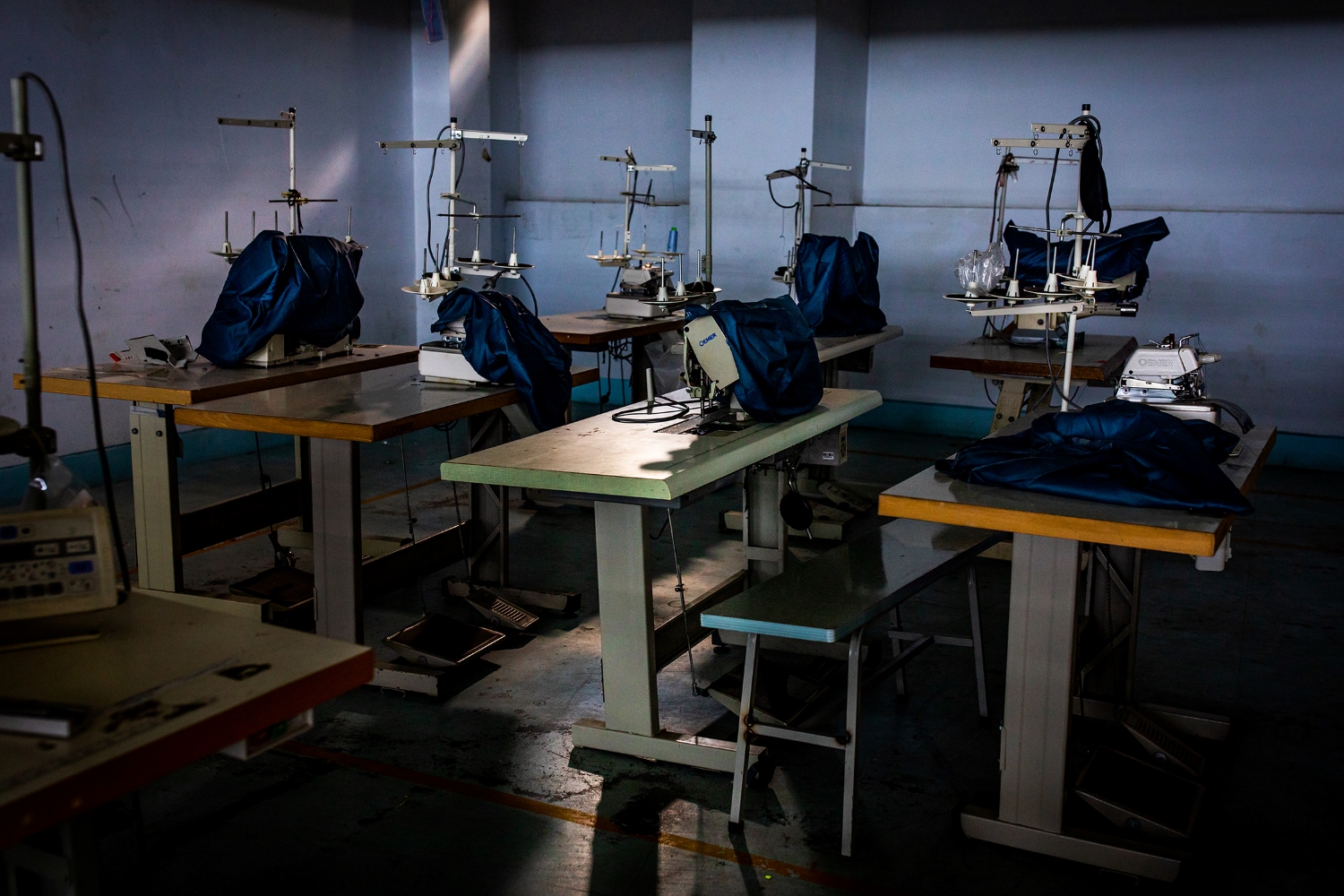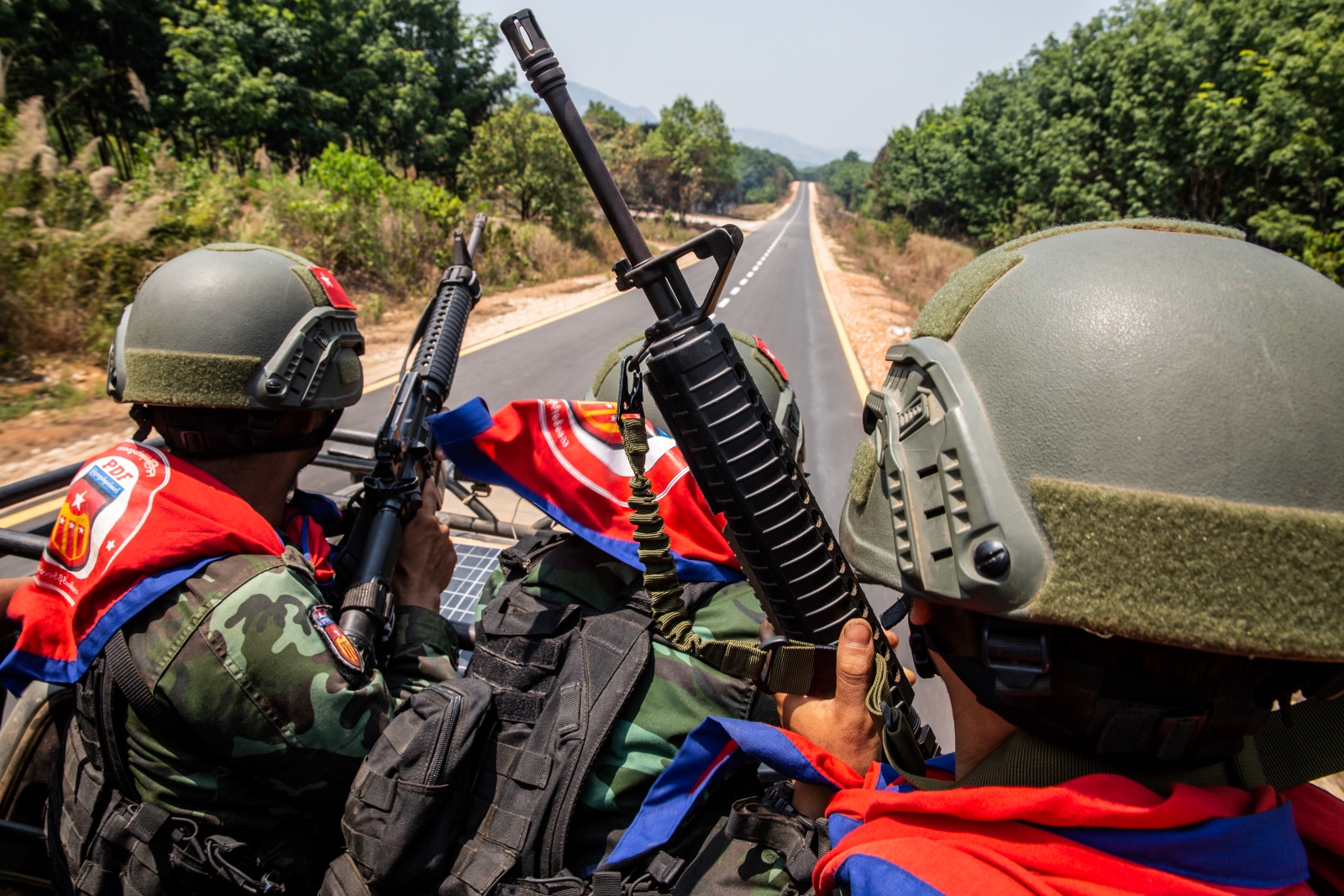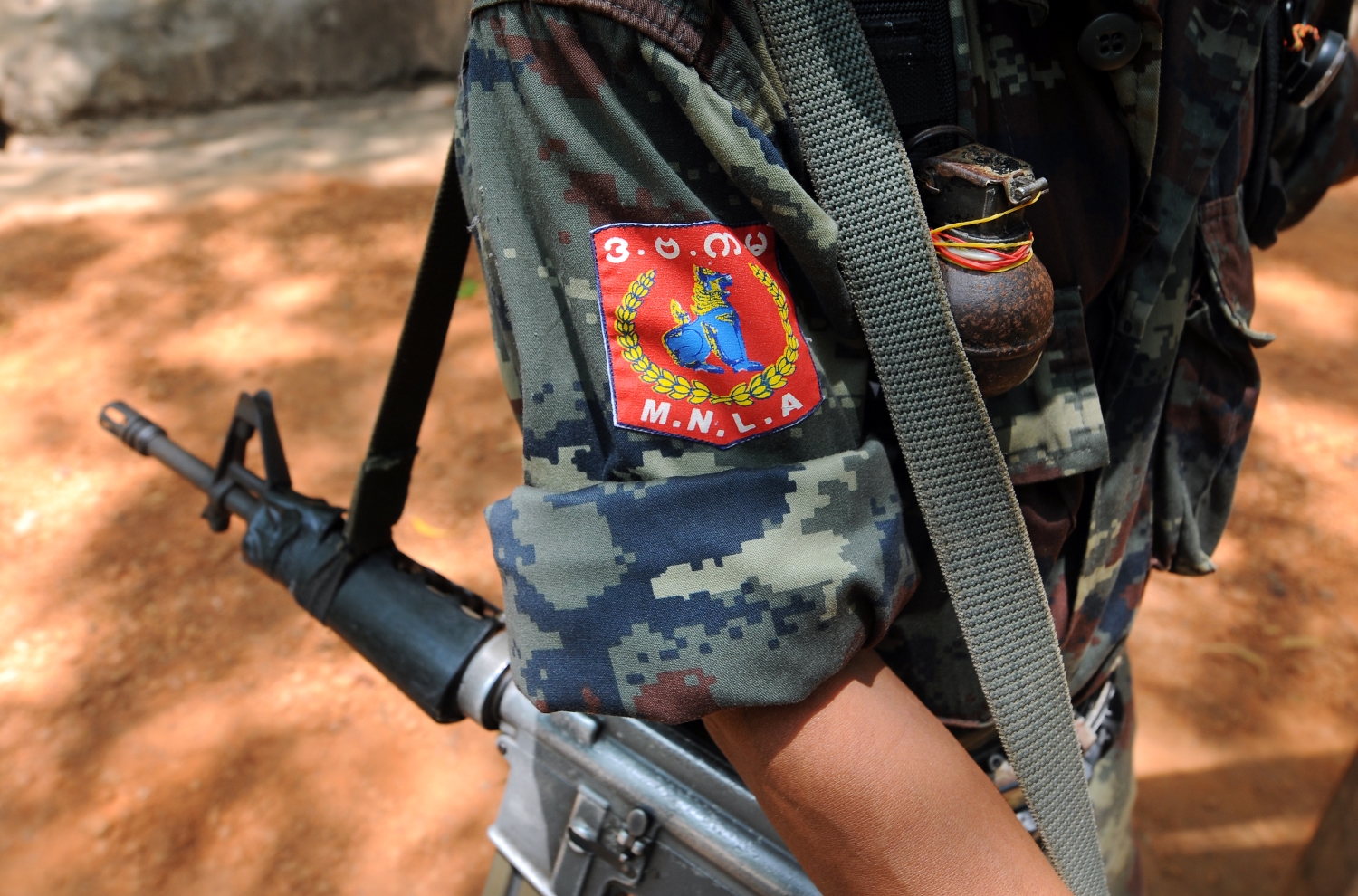Months after a report on abuses and corruption in prison labour camps prompted calls for reforms and investigations, little has changed.
By SWE WIN | MYANMAR NOW
ZIN KYEIK LABOUR CAMP, Mon State — Prisoners continue to conduct hard labour in shackles in a Mon State labour camp, Myanmar Now has found, despite calls for reforms by lawmakers and investigations into prison abuses by a UN rights envoy and the International Labour Organisation.
In September, a special report by Myanmar Now revealed widespread corruption and human rights abuses, such as continuous shackling and beatings, in Myanmar’s 48 prison labour camps, which hold some 20,000 convicts.
The revelations prompted National League for Democracy MPs to question the Minister of Home Affairs over the conditions, while United Nations special rapporteur for human rights in Myanmar Yanghee Lee went to inspect Zin Kyeik Labour Camp in Mon State in early January.
In an end-of-mission statement she expressed concern over alleged forced labour and “the use of shackles as a form of additional punishment (including during quarry work) and the lack of transparency on how prisoners are selected for transfer to the camp.” She added that prisoners had been ordered to clean the camp shortly before her visit.
Support more independent journalism like this. Sign up to be a Frontier member.
These public calls appeared, however, to have had little impact on prison authorities in charge at Zin Kyeik Labour Camp.
In late January, this reporter photographed dozens of thin-looking prisoners, shackled at all times, working manually at the quarry. The site holds some 400 convicts, who are put to work on a daily basis, using sledgehammers to break rocks into gravel, while others load pieces of rock onto lorries.
According to official prison rules, convicts can only be kept shackled up to one month after arrival in a camp or prison.
This reporter entered the camp to seek comments from authorities on the conditions. Prison officials denied that shackling prisoners at all times was a common practice and insisted that the numerous prisoners were being shackled because they all had recently arrived.
Aung Lwin Oo, deputy director at Zin Kyeik Camp, said shackling the prisoners for the first month after they arrive was a necessary measure to prevent escape.
“The prison authorities lock the legs of prisoners so they are unable to escape from jail or breach prison rules, which may increase their punishment,” he said during an interview at his office.
The mother of a prisoner at Zin Kyeik Camp said she was deeply concerned her son’s health. “My son now has to work in the rock quarry with the iron shackles,” she said, speaking on condition of anonymity.
She added that when she visited the camp in early January she saw another prisoner sustain a serious injury when falling rocks hit his shackled legs.
Forced labour for profit
The construction material produced from free manual labour is sold by prison authorities to well-known local construction companies. Obtained documents showed millions of dollars in annual revenue are generated from 18 quarries — officially called “manufacturing centres” — in southeastern Myanmar.
At another 20 camps in Shan State and Sagaing Region prisoners are put to work on plantations, which are officially referred to as “agriculture and livestock breeding training careers centres.”
Myanmar Now’s investigation revealed prisoners there are subject to daily beatings by prison officials and their aides to speed up work or to extract bribes from convicts. Prisoners were also rented out as labourers to commercial agribusinesses, with authorities collecting the payments.
The practice of letting private companies use convicts violates the 1930 Forced Labour Convention of the International Labour Organisation (ILO), which Myanmar signed and ratified in 1955.
ILO’s Myanmar office accepted one complaint of forced labour by a former convict in September and said the government had agreed to look into the case.
ILO’s report for an upcoming meeting of its Governing Body describes the allegations that prisoners are “made to work in quarries and plantations run by the correction authorities for private commercial purposes, or else are allegedly put to work at private plantations nearby the correction centres for the private gain of the authorities, without being paid.”
The report said ILO wants to support prison reform in Myanmar and plans to conduct training of the prison administration on international standards for prison labour.
It notes, however, that the NLD government has so far failed to convene the inter-ministerial Technical Working Group on handling forced labour complaints. Neither has the government taken any action on 61 complaints of underage recruitment and forced labour submitted by the ILO since the administration assumed office in April last year.
UN envoy Yanghee Lee said in a recent report that the Ministry of Home Affairs had announced plans to revise the draft Prison Law, adding that she hoped it would be in line with international standards.
So far, Myanmar’s democratic reforms have largely bypassed the country’s notorious prison system and labour camps, which totally hold some 100,000 prisoners.
When MPs asked the military-controlled Home Affairs Ministry to close the labour camps in December, General Aung Soe replied there were no labour camps, but only “vocational training centres for prisoners.” He added that sufficient mechanisms were in place to prevent abuses.
Former convicts interviewed by Myanmar Now said none had ever received vocational training during their ordeals in the labour camps.
Aung Lwin Oo, deputy director at Zin Kyeik Labour Camp, said he could not implement vocational training programmes even if he wanted to.
“We have no authority to conduct vocational training courses at our camp,” he said. “The regular activity at our camp is to extract rocks — except on gazetted holidays.”
This article was originally published by Myanmar Now. TOP PHOTO: Prisoners are seen in Mon State’s Zin Kyeik Labour Camp quarry, manually breaking rocks while shackled at the legs. (Swe Win | Myanmar Now)


